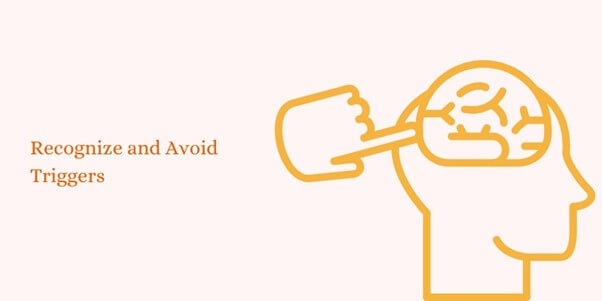13 Healthy Ways to Release Your Anger
Feeling angry is a natural part of life, as everyone experiences it occasionally. However, each person expresses anger uniquely, and different situations can trigger different types of anger.
Some people may vent their anger by arguing, raising their voices, or even cursing. In more intense cases, anger can turn physical, like throwing or breaking objects.
When anger becomes a regular experience, it’s essential to address it in healthy ways. While anger is common, knowing how to release it constructively can greatly benefit our well-being.
Persistent anger can affect the body, raising the risk of cardiovascular issues, digestive problems, and weakened immunity.
Withoutknowing the healthy ways to release anger, chronic anger may increase the chances of ulcers, bowel disorders, high blood pressure, and even stroke.
Relationships with loved ones will also suffer, especially if anger is misdirected or unmanaged.
Suppressing anger is not a long-term solution, as it can lead to added stress and health problems.
Instead, finding positive ways to release anger can help prevent these effects, allowing you to lead a healthier life.
Here, we share 13 effective strategies for managing and releasing anger in healthy, constructive ways to stay calm, balanced, and focused.
13 Healthy Ways to Release Your Anger
Finding healthy ways to release anger not only helps you regain calm but also prevents the potential health risks associated with holding on to intense emotions.
Unresolved anger can lead to physical issues, such as high blood pressure, digestive problems, and even weakened immunity, not to mention the impact it can have on mental well-being.
Here are 13 healthy ways to release anger:
- Throw or break something
- Scream Privately
- Sing it Out
- Dance
- Do a tough workout
- Start journaling
- Change your surroundings
- Destroy a physical representation of your anger
- Verbalize your anger
- Step away from the situation
- Take deep breaths
- Recognize and avoid triggers
- Seek professional help
Learning healthy ways to let go of anger can transform frustration into relief, helping you handle challenging moments with a clearer mindset.
1. Throw or Break Something

One of the most immediate ways to release pent-up anger is through physical actions, like throwing or breaking objects.
While this may sound intense, using designated items, such as soft balls or breakable, non-dangerous objects, can provide a safe and satisfying release.
Physically expressing your anger helps channel intense emotions in a way that is both tangible and controlled, giving you an outlet to discharge energy and frustration without harming yourself or others.
Many people find throwing soft objects like stress balls or bean bags helpful in releasing tension.
Others may choose items specifically meant to be broken, like plates or glassware designed for safe breakage in spaces designated for stress relief, such as rage rooms.
The act of hearing or feeling something shatter can offer a powerful sense of release, mirroring the emotional intensity of anger and symbolically “breaking” the tension held within.
It’s important to note that while throwing or breaking things can be therapeutic, it should be done in a controlled environment where there’s no risk of harm.
Many cities now offer rage rooms or destruction rooms where people can safely break objects to relieve stress.
This can be a beneficial outlet for people who struggle to manage their emotions verbally or through traditional exercises. If trying this at home, be mindful of using objects that won’t injure or damage your environment.
Afterward, many people report feeling a sense of relief and calm, allowing them to return to their day with a clearer mindset.
When used responsibly, this method can be a helpful addition to an anger management toolkit, providing an immediate outlet for intense feelings and offering a fresh start on your emotions.
2. Scream Privately

Screaming privately is a powerful way to release pent-up anger, allowing you to express your emotions raw and unfiltered without affecting others.
When we suppress anger, it can build up and weigh on us mentally and physically.
Releasing it through a scream, especially in a private, safe place, can provide immediate relief, helping to let go of built-up tension.
This act can feel cathartic, giving voice to emotions that may be difficult to articulate or process otherwise.
To scream safely, find a private area where you can let loose without worrying about others overhearing or becoming alarmed.
Some people find it helpful to scream into a pillow or go to an isolated spot, such as a car or a secluded outdoor area, to express their anger freely.
The sensation of yelling can activate the body’s stress-relief mechanism, releasing endorphins and reducing tension.
By externalizing frustration in this way, you can gain a clearer mind and even feel a renewed sense of energy. This release allows you to address your feelings more calmly afterward, helping you avoid venting your frustrations on others or internalizing your anger.
3. Sing It Out

Singing can be a surprisingly effective way to channel anger, as it combines self-expression with the calming effects of music.
When you sing, your body releases dopamine and serotonin, hormones that help improve mood and lower stress.
Choosing songs that resonate with your emotions—whether upbeat, relaxing, or intense—can create a therapeutic experience that allows you to “sing away” your anger.
Singing forces you to breathe deeply, which automatically helps lower tension and regulate the nervous system.
To use singing as a form of anger release, choose music that matches your mood or expresses your feelings.
For some, belting out high-energy songs or singing along to powerful lyrics can help channel their anger in a controlled, creative way. You can sing anywhere you feel comfortable in your room, car, or shower.
By vocalizing emotions through song, you can access a positive outlet for anger that replaces frustration with a sense of empowerment or relaxation.
Many people find that singing offers an enjoyable alternative to more intense anger-release methods and leaves them with a lighthearted feeling that can turn anger into enjoyment.
4. Dance

Dancing is a physical and emotional outlet that allows you to release anger through movement.
When angry, your body produces adrenaline and cortisol, stress hormones that increase energy and heighten emotions.
By dancing, you allow these hormones to dissipate, transforming anger into a powerful, expressive activity.
Dancing can also improve mood by triggering the release of endorphins, your body’s natural “feel-good” chemicals.
Choose music that resonates with how you’re feeling, whether that’s high-energy songs that let you stomp, jump, and move freely or something more soothing to help you unwind.
Dancing in a private space allows you to move without inhibition, fully expressing yourself without worrying about others.
Some people find that specific dance styles, like hip-hop or freeform dancing, are especially effective for venting anger.
The movement allows you to “shake off” the negative energy while focusing on rhythm and body coordination, which helps to shift your mind away from whatever triggered your anger.
Dancing to release anger is creative and therapeutic, giving you a safe outlet to transform difficult emotions. Afterward, you may feel lighter, more grounded, and ready to face challenges with a fresh perspective.
Dancing releases built-up tension and boosts your mood, making it a versatile and enjoyable approach to managing anger constructively.
5. Do a Tough Workout

Engaging in a tough workout is one of the most effective ways to release anger, as it channels intense emotions through physical exertion.
Anger activates your body’s “fight or flight” response, producing adrenaline and increasing heart rate, which naturally primes you for action.
A challenging workout provides a healthy outlet for this energy, allowing you to work through your anger while benefiting your physical health.
High-intensity activities, like running, kickboxing, weightlifting, or circuit training, are particularly effective for releasing anger.
These workouts require focus, strength, and energy, giving you a productive way to channel the frustration into something that leaves you feeling physically stronger and mentally clearer.
Many people find that repetitive exercises like punching or lifting allow them to “hit out” or “push through” their anger in a controlled and healthy environment.
As you exercise, your body releases endorphins, the natural chemicals that help reduce pain and increase pleasure, helping you to feel more relaxed and satisfied after a workout.
By the end of a rigorous workout, you’ll often feel a sense of accomplishment, replacing anger with pride in your resilience. The mental focus and physical activity combine to clear your mind, helping you to process your emotions more calmly.
Over time, a tough workout can become a go-to tool in your anger management toolkit, transforming negative energy into positive results.
6. Start Journaling

Journaling is a powerful tool for processing and releasing anger in a reflective, private way. Writing down your thoughts and feelings allows you to externalize your emotions, clarifying why you’re angry and what may be contributing to it.
Journaling creates a safe space to vent without judgment, enabling you to work through your frustrations without the risk of conflict or miscommunication.
Begin by writing whatever comes to mind, letting yourself express all your feelings freely. Some people find it helpful to start with prompts like “What am I feeling right now?” or “Why am I upset?” to explore the root of their anger.
Journaling about specific incidents can help you identify patterns and triggers, allowing you to understand what led to your anger and how to manage similar situations in the future.
If there are ongoing conflicts or stressors in your life, writing regularly can help you track your emotional responses over time, helping you identify what helps and what doesn’t when handling anger.
Journaling also provides the opportunity to reframe situations. By looking back at your entries, you might see how a situation seemed overwhelming at the moment but was manageable with time and perspective.
This process can help lower stress and improve emotional resilience, turning journaling into an immediate release and a long-term anger management tool.
7. Change Your Surroundings

When anger becomes overwhelming, sometimes the best solution is a change of scenery. Moving to a different environment can help interrupt your emotional state, giving you the mental space needed to cool down and gain perspective.
Staying in the same environment where anger was triggered can keep emotions high, as surroundings often reinforce the source of frustration. By stepping away, you can effectively reset and avoid reacting impulsively.
Changing your surroundings could be as simple as stepping outside for fresh air, moving to another room, or taking a quick walk. If you’re in a heated discussion or stressful environment, physically removing yourself for a few minutes can make a big difference.
Fresh air and nature have been shown to reduce stress and anger, making a short outdoor break especially effective.
Even a brief change, like sitting in a quiet space or visiting a nearby park, can create a buffer between you and your anger, helping you return to the situation with a calmer mindset.
When you return to your original environment, you’re likely to feel more grounded and better equipped to handle what initially made you angry.
Regularly using this technique can also help you recognize when you’re nearing your limit, encouraging you to take a break before frustration peaks.
Changing your surroundings is a simple but powerful strategy to break the cycle of anger and find the clarity needed to approach challenging situations constructively.
8. Destroy a Physical Representation of Your Anger

Creating and destroying a physical representation of your anger can be a satisfying way to externalize and release your frustrations.
This approach allows you to transfer your anger into something tangible, giving you a sense of control and a concrete way to release pent-up emotions.
For instance, writing down what’s angering you on a piece of paper and then tearing it up or smashing an item designed for this purpose, like a stress-relief object, can be highly effective.
To try this technique, start by identifying the source of your anger and think of a physical way to represent it.
Writing down the cause of your frustration can help you clarify the source of your emotions.
Then, once you’ve transferred your anger onto this “representation,” tear, crush, or smash it to release those feelings.
Many people find it helpful to use breakable items, like paper, clay, or old boxes, to safely express anger in a non-destructive way.
You might also use a designated object like a stress ball or punching bag or create something symbolic, like molding clay, to channel your frustration.
This action can be surprisingly effective because it gives a concrete “end” to your anger. By breaking or destroying an object, you may feel a sense of release, as though you’ve let go of some of the intensity.
Practiced in a safe, controlled environment, this method provides a powerful way to address anger and move forward with a clearer mind.
9. Verbalize Your Anger

Talking through your anger out loud, even if it’s just to yourself, can help you process and reduce intense emotions.
Verbalizing your anger provides a way to acknowledge and understand your feelings rather than suppress them.
By putting your emotions into words, you can clarify what’s truly bothering you and begin seeing things differently. This process can lessen the emotional load, allowing you to address frustration without escalation.
To effectively express your anger, find a private space where you can speak freely, such as your car, bedroom, or a secluded outdoor spot.
Begin by describing what’s making you angry, using specific details to help you understand the root cause.
Sometimes, it helps to imagine that you’re explaining the situation to a trusted friend, even if no one else is there.
This way, you can fully express your mind without fearing judgment or interruption. Talking out loud often lets you hear your thoughts objectively, which can bring new insights and help you reframe the situation.
In addition to reducing stress, verbalizing your anger helps you practice healthy communication. If a conflict is involved, saying your frustrations aloud can help you prepare to communicate effectively with others.
Instead of bottling up emotions, you allow yourself to release them constructively, helping you approach similar situations with better control and self-awareness.
10. Step Away from the Situation

Sometimes, the simplest and most effective response to anger is to step away from the triggering situation.
When emotions are running high, taking a brief break allows your mind to reset and reduces the chance of reacting impulsively.
Staying in a heated environment can intensify frustration, so removing yourself provides essential space to cool down. This “time-out” approach helps you manage anger at the moment and prevents potential conflict.
When you notice yourself becoming overly angry, physically step away to create mental distance. This could mean leaving the room, taking a short walk, or sitting in a quiet spot for a few minutes.
A quick break can provide perspective, allowing you to rethink your response rather than reacting immediately.
If you’re discussing, calmly let the other person know you need a moment to gather your thoughts. This helps you regain control and signals to others that you’re committed to handling the situation maturely.
Taking a break allows you to breathe deeply, slowing your heart rate and calming your mind.
Stepping away doesn’t mean avoiding the issue; it’s a way to ensure you address it with clarity and patience.
Returning to the situation with a fresh mindset can prevent misunderstandings and help you respond in a way that maintains your composure.
In time, this “stepping away” habit can become a valuable tool in managing stress, allowing you to confront anger with greater self-control and emotional resilience.
11. Take Deep Breaths

Taking deep breaths is one of the simplest yet most effective techniques for calming yourself when anger arises.
Anger triggers the body’s stress response, leading to faster breathing, increased heart rate, and muscle tension.
Deep breathing helps to counteract these physical reactions by slowing your breathing and promoting relaxation, naturally reducing anger’s intensity.
Focusing on your breath can also shift your attention away from the source of frustration, giving you a moment to collect your thoughts before reacting.
To practice deep breathing, start by inhaling slowly through your nose, filling your lungs, and allowing your abdomen to rise.
Hold the breath for a moment, then exhale fully through your mouth, allowing your body to relax with each breath.
Repeating this process several times helps you stay grounded and gives your mind a chance to reframe the situation with a calmer outlook.
Regular deep breathing reduces anger at the moment and improves your body’s ability to manage stress over time. This technique can be used anytime, anywhere, providing an easy, accessible way to handle anger effectively.
12. Recognize and Avoid Triggers

Recognizing and avoiding triggers is a proactive approach to managing anger. Everyone has unique anger triggers, which could range from specific situations, people, or even certain words.
By identifying these triggers, you can avoid them or respond to them differently.
Awareness of what sparks your anger is the first step in controlling your reaction, empowering you to prevent escalation before it starts.
Start by noticing patterns in your anger. Are there recurring situations or interactions that provoke strong reactions? Once you identify these, consider ways to address or avoid them.
For example, if traffic is a major trigger, perhaps adjusting your commute time or route could help.
For situations that can’t be avoided, like certain work interactions, plan ahead with calming strategies, such as deep breathing or positive affirmations.
By learning to anticipate triggers and preparing to face them calmly, you can reduce their impact on your mood and responses.
Recognizing your triggers doesn’t mean avoiding life’s challenges; it means equipping yourself to handle them with awareness and resilience.
13. Seek Professional Help

If anger frequently impacts your relationships, work, or well-being, seeking professional help can be valuable.
Professional anger management classes, such as the ones offered by Mastering Conflict, provide structured support to help you assess, understand, manage, and reduce anger in healthy ways. Skilled therapists and counselors work with you to explore the root causes of your anger, teaching coping strategies beyond basic techniques.
Mastering Conflict’s anger management classes gives individuals practical tools to handle anger constructively.
Classes cover skills like recognizing early signs of anger, managing conflict effectively, and replacing negative reactions with positive behaviors.
Through these programs, you’ll learn techniques that help in moments of anger and process stress and conflict calmly and confidently.
Group sessions also provide a supportive environment where sharing experiences with others can help you feel understood and less isolated in your struggles.
Investing in professional counseling helps show a commitment to personal growth and improving relationships.
The skills you develop in an anger management program can enhance your emotional resilience and improve all areas of your life, equipping you to face future challenges with a balanced, calm approach.
Frequently Asked Questions
What are healthy ways to let out anger so it doesn’t build up and explode?
Healthy ways to release anger include exercising, journaling, or practicing deep breathing. Creative outlets like painting or music can also help, providing a constructive way to channel emotions and prevent anger from building up.
What are some healthy ways to release anger?
Try physical activities like running or hitting a punching bag, journaling, or even screaming privately to release pent-up anger. These methods allow you to let out emotions constructively without escalating them.
I am so full of anger, and I can’t stand it. How do I release it in a non-destructive and non-harmful way?
To release tension, engage in calming activities like deep breathing, mindfulness, or a brisk walk. Journaling or talking to a friend can also help you constructively process and let go of your anger.
How can you deal with anger in a healthy way?
Use calming techniques like deep breathing, physical exercise, or meditation. Creative outlets like art, writing, or music allow you to express emotions productively and defuse anger before it overwhelms you.
How to release anger without hurting anyone?
Take a time-out, engage in physical activity, or try stress-relief exercises like yoga. Releasing anger into safe outlets, like journaling or hitting a punching bag, helps prevent harm to yourself and others.
Conclusion
Identifying healthy ways to release anger is essential for maintaining well-being and nurturing positive relationships.
Though anger is a natural emotion, when it’s not released constructively, it can lead to stress, health issues, and tension with others.
Practicing methods like deep breathing, journaling, or engaging in physical activities can help you release anger productively, reducing its harmful effects on your mind and body.
Recognizing and understanding your anger triggers is also key, allowing you to approach situations with greater awareness and control.
If you’re finding it challenging to manage anger alone, remember that professional support is available.
Programs like Mastering Conflict offer practical, actionable techniques to cope with anger and improve emotional resilience. These classes provide a structured environment to understand the root causes of your anger and develop lifelong tools for managing it.
Learning healthy ways to handle anger benefits you personally and helps create a more positive environment for those around you.


7 Responses